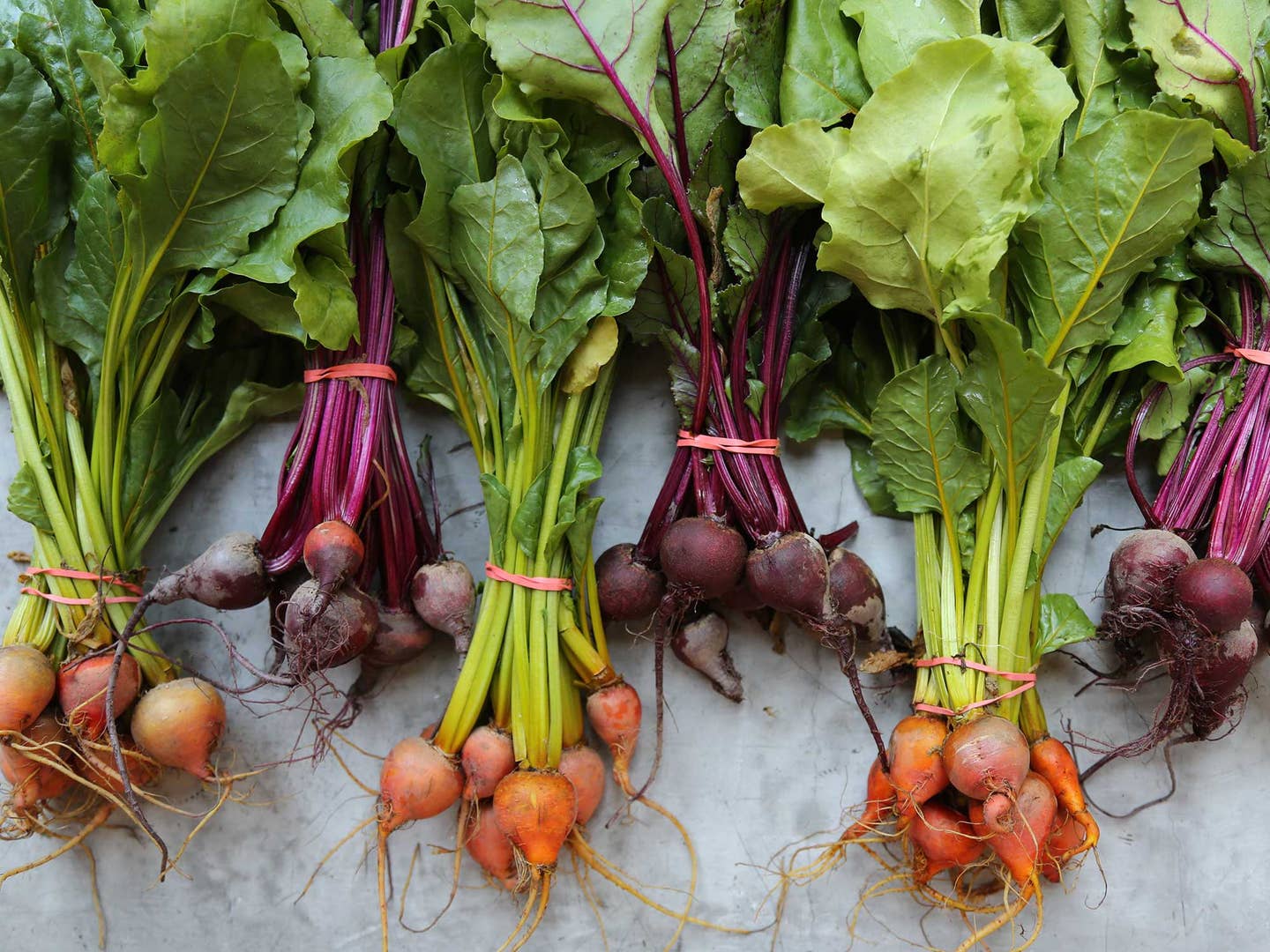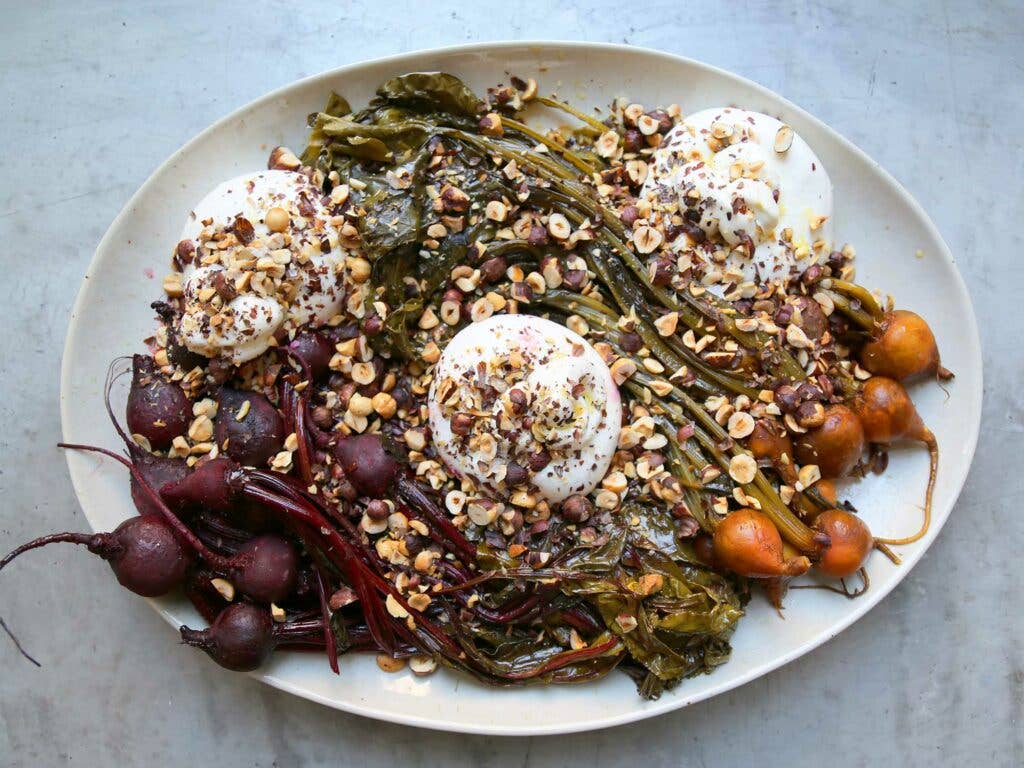
Beet-Haters: Spring Beets May Change Your Mind
These fresh, extra-sweet root vegetables are so cute, tiny, and delicious, they’ll make you forget all about your canned beet nightmares
Beets are one of the few ingredients still at the farmers market in the dead of winter, so people aren’t exactly hankering for them when spring rolls around. But here’s the thing: Spring beets are different from winter beets, and they’re totally worth your attention.
In general, I don’t think beets get enough appreciation. A lot of people say they taste like dirt (which, fine, sometimes they do, but let’s be nice and call it earthy). Others say they take too long to cook, or are too messy to prepare. Flimsy excuses, I say, but regardless, spring beets are the best way to get over any of these issues. Here’s why:
- First, they're young and cute and small, about the size of golf balls, and that alone is enough to prompt an impulse purchase at a farm stand.
- Because they're young, they're less minerally and earthy than mature beets. Think more sweet, less soil.
- Young beets are the least time-consuming to prep and cook. You can even serve them raw; thinly sliced, they're juicy and crisp. And their small size means they cook quicker than their hulking relatives. Especially young and tender beets don't even need to be peeled.
- And if the hand-staining thing really bugs you, buy yellow or chioggia beets. Problem solved.
And they come with the added bonus of beet greens. Beet greens are tender and mild, like swiss chard (which they’re related to). They’re lovely on their own, and they’re a perfect complement to the beets they’re attached to.
How to Buy and Store Spring Beets

When buying spring beets with leaves attached, pick bunches based on how pretty the greens look. You want happy and healthy looking greens.
When storing, cut the greens from the roots. While the roots will keep for several weeks, the greens don’t last long. Wrapped in a paper towel and stored in a plastic bag, they’ll keep in the fridge for a few days. Use them quickly to avoid wilty and sad greens. As for the roots, store them in a loose plastic bag in the crisper drawer.
What to Cook With Them
I recently got to spend some time with chef Joshua McFadden, of Ava Gene's in Portland, while he was in town to celebrate the release of his new book, Six Seasons (which includes some very good ideas for putting beets to use, like a raw salad, pickles, roasted and smashed, and added to salads). After beet-hunting at the Union Square Greenmarket, we returned to the SAVEUR test kitchen to make a beet and burrata dish that is definitely worth trying at home. He didn't use any precise measurements, but if you're comfortable in the kitchen, and like to cook intuitively, here's a bit of instruction:
In a roasting pan, toss beets (with greens attached) with olive oil, vinegar (champagne vinegar for yellow beets, red wine vinegar for red beets), Maldon sea salt, chile de arbol, and a bit of water, cover them tightly with foil, and let them hang out in the oven at 400° until the roots are al dente (it took us about 50 minutes). Set them on a platter, add burrata, and finish with toasted hazelnuts.
Then get more cute spring beets while they're still around.
Keep Reading
Continue to Next Story










